Dynamic Research, Inc. and 6D Helmets, LLC.
Robert Reisinger (left), Terry Smith (center) and Bob Weber (right) in the testing lab.


“The health of NFL players continues to be our highest priority.”
Each NFL season brings with it new opportunities. An opportunity to improve—to make each season better than the last, which includes an opportunity to strive to make the game safer for our players.
Last season, we launched Play Smart. Play Safe.—our League-wide health and safety initiative—to drive progress in the prevention, diagnosis and treatment of head injuries, enhance medical protocols and procedures, and further improve the way the game is taught and played at all levels.
This work is gaining momentum. At the heart of the initiative is a pledge of $100 million in support of independent medical research and engineering advancements and a commitment to look at new and exciting ways to protect our players and make the game safer.
Of the $100 million, the League is investing $60 million into the Engineering Roadmap—a project to better understand concussion-causing impacts and provide innovators and manufacturers with both novel research and incentives to develop advanced protective equipment. $40 million will be allocated for new medical research, primarily dedicated to neuroscience. This work is led by an independent Scientific Advisory Board that is charged with reviewing and evaluating research proposals, and recommending projects for investment.
Co-Chairman, San Francisco 49ers, Chairman, NFL Owners’ Health and Safety Advisory Committee
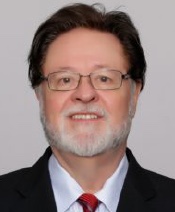 Read message
Read message
The NFL is championing new developments in engineering, biomechanics and material science designed to better protect against injuries in sports and recreation, as well as for the military.
The NFL is investing in and supporting preeminent experts and institutions to advance progress in the prevention, diagnosis and treatment of head injuries.
The NFL is making changes on and off the field in an effort to protect the health and safety of every player in the NFL.
The NFL is sharing learnings across all levels of football—and to other sports and society at large.
Four years ago, GE and the NFL launched the Head Health Initiative, a multi-year research and development program and series of open innovation challenges. This dynamic collaboration spurred breakthroughs in concussion research, prevention, diagnosis and treatment, such as next-generation brain imaging technologies, groundbreaking diagnostic tools and impact-absorbing materials.

Leveraging this model, the NFL continues to stimulate the marketplace to support novel developments in sports safety. The NFL’s latest research and development program, the Engineering Roadmap, is a comprehensive plan that engages the best minds in biomechanics and engineering to understand more about how head injuries happen on the football field, and use what is learned to catalyze the design of better protective equipment in the future.
1st and Future, the League’s annual Super Bowl start-up competition, attracted some of the smartest minds in sports safety technology and engineering. This year, in Houston, TX, they competed for $50,000 from the NFL to be used to continue their innovative work, and a spot in the Texas Medical Center Accelerator.
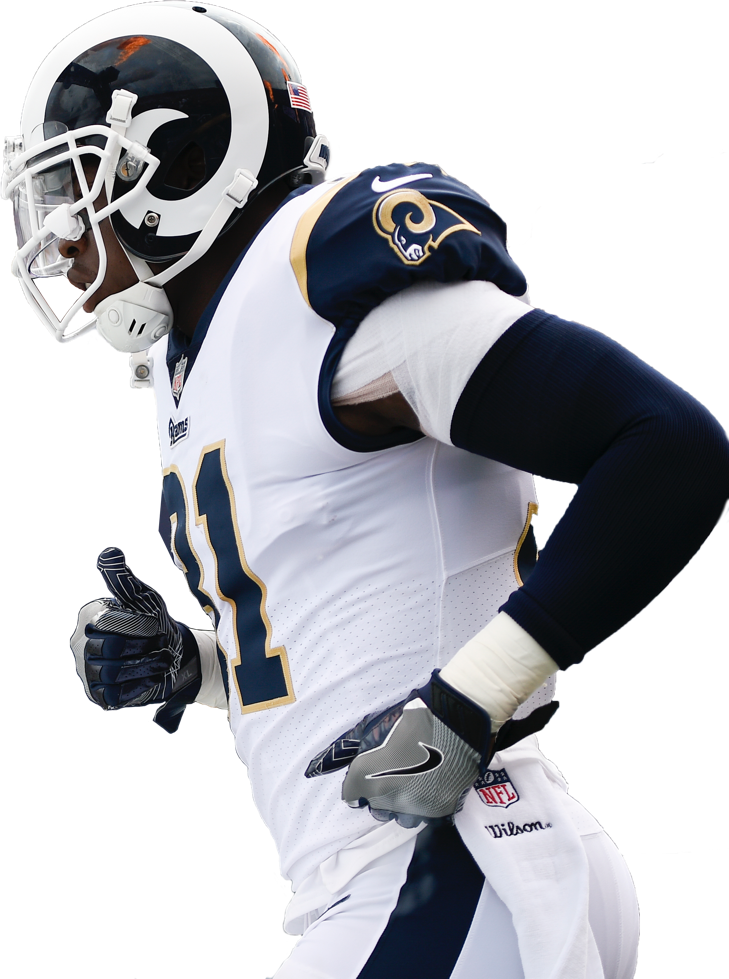
Football Research, Incorporated (FRI), a nonprofit corporation formed and financially supported by the NFL, manages the Engineering Roadmap. The Board of Directors includes leading engineers and experts who advise FRI on how best to achieve the goal of advancing the understanding of biomechanics in football and creating an environment where new and improved protective equipment will be developed.
The Board works closely with Dr. Kristy Arbogast and Dr. Barry Myers, consultants to the NFL Players Association, who are co-leads on essential elements of the Engineering Roadmap. Jeffrey Crandall, Ph.D., Chair of the NFL Engineering Committee, also serves a leading role in managing the Engineering Roadmap. Dr. Crandall is the Nancy and Neal Wade Professor of Engineering and Applied Sciences at the University of Virginia and Principal Scientist and Consultant at Biocore, LLC.
Jeffrey Crandall, Ph.D., chairman of the NFL Engineering Committee, serves a leading role in managing the Engineering Roadmap. Dr. Crandall is the Nancy and Neal Wade Professor of Engineering and Applied Sciences at the University of Virginia and Principal Scientist and Consultant at Biocore, LLC. The Board also works closely with Dr. Kristy Arbogast and Dr. Barry Myers, consultants to the NFL Players Association, who are co-leads on essential elements of the Engineering Roadmap.
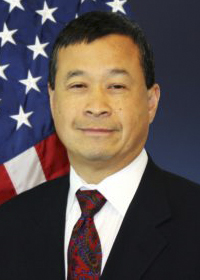

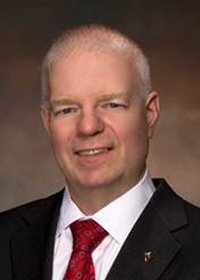


Three dozen experts gathered on the field at Lucas Oil Stadium in Indianapolis, IN, during the fall of 2016 for a collaborative research effort focused on the future design of protective equipment.
With specialties that included forensic engineering, impact sensor technology, data acquisition, biomechanics and crash reconstruction, they put sensor-enabled crash test dummies through football-like hits. The action was filmed with 18 3D motion capture cameras and 11 high-definition game day cameras to capture impacts from dozens of angles around the field with the goal to better understand the forces and motions that occur when a player receives an impact.
These videos and reconstructions of injury-causing plays will be used to strengthen the understanding of the physics underlying concussion-causing impacts, and the resulting data will be shared with manufacturers, designers, innovators, entrepreneurs and universities to help inform improved future equipment design.
Jeffrey Crandall, Ph.D., chairman of the NFL Engineering Committee, serves a leading role in managing the Engineering Roadmap. Dr. Crandall is the Nancy and Neal Wade Professor of Engineering and Applied Sciences at the University of Virginia and Principal Scientist and Consultant at Biocore, LLC. The Board also works closely with Dr. Kristy Arbogast and Dr. Barry Myers, consultants to the NFL Players Association, who are co-leads on essential elements of the Engineering Roadmap.
“Once we have a model that can represent motion of the head and brain under the most common concussion scenarios, what we can do is take those models and incentivize manufacturers to design a helmet model computationally that would better protect against those injuries… then they can design it physically and get that helmet on the field.”Jeff Crandall,Director of The Center for Applied Biometrics at The University of Virginia
Chairman of the NFL Head, Neck and Spine Engineering Committee

In November 2016, the NFL and FRI hosted a first-of-its-kind educational conference. Hundreds of world-class biomechanics and biomedical engineering experts gathered with innovators—from inventors to equipment manufacturers to engineering students—in Washington, DC, for “The HeadHealthTECH Symposium: Fundamental Biomechanics of Concussion in the NFL.”
The conference was the first in a series of educational efforts aimed at sharing the latest biomechanical and biomedical information and encouraging collaboration. Experts shared the latest knowledge regarding the causes of concussion in professional football, including the best tools available for assessing and optimizing the design and manufacturing of protective equipment.
These discussions are a key part of the NFL’s Engineering Roadmap and an important step to educating and creating incentives for those in the marketplace to design and manufacture protective equipment that performs better than current models. Periodic symposia, webinars and other educational efforts will allow experts to share the most up-to-date biomechanical and biomedical information.
“The more we learn, the more we want to continue to push the envelope on materials and design.”Sarah Gholston,Vice President of Merchandising at Russell Athletic

The NFL’s HeadHealthTECH Challenges are attracting innovative grant proposals from institutions, individuals and corporations that are interested in designing the next generation of protective equipment. These proposals range from concepts to commercially ready products for use by athletes.
The TECH Challenges are operated and managed by Duke University’s Clinical and Translational Science Institute (Duke CTSI). Duke CTSI accepts and evaluates proposals and assists some of these promising concepts to accelerate their development.
The TECH Challenges are structured to stimulate research and innovation, as well as to encourage connections with mentors and venture capitalists, with the goal of spurring developments in engineering, biomechanics, advanced sensors and material science. It’s a “high-touch” program where experts in the field work closely with grant recipients to improve their products, and those recipients retain ownership over their ideas at all times.
As part of the Engineering Roadmap, up to three HeadHealthTECH Challenges will be offered annually.
“If you’re an innovator, we want you to apply. We want you to reach out. We want to hear what your product is, we want to hear what your vision is, and we want to know in what ways we can help you succeed.”Dr. Barry Myers,Director of Innovation at Duke CTSI Coulter Program
Director Duke Professor of Biomedical Engineering

The Head Health Challenge open innovation program is supported by the NFL, GE, Under Armour and the National Institute of Standards and Technology (NIST). This three-part challenge program has crowdsourced innovative ideas from experts around the world, ultimately generating more than 1,000 concepts submitted from experts in 30 countries.
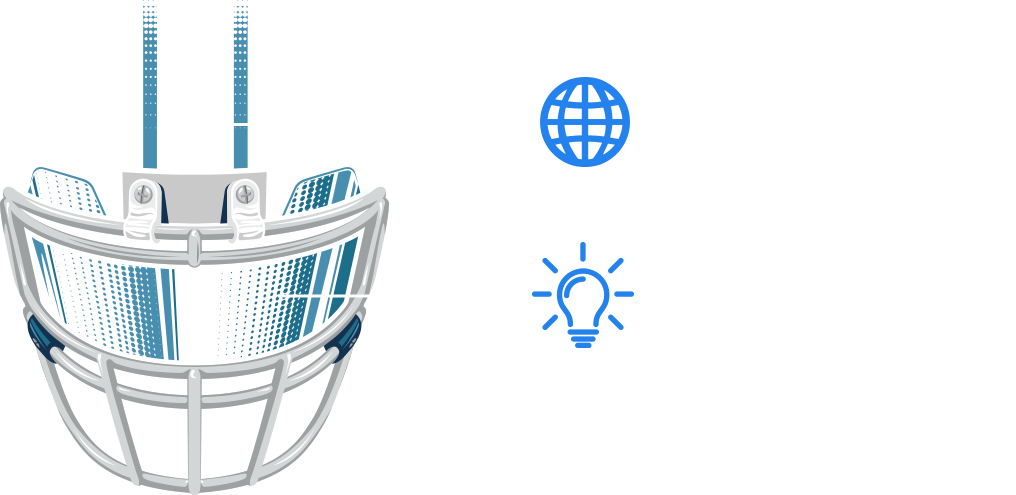

This year also saw significant developments from winners from Head Health Challenges I and II:
A Head Health Challenge I grand prize winner, BrainScope, developed a hand-held device designed to provide “a rapid, objective assessment of the likelihood of the presence of traumatic brain injury in patients who present with mild symptoms at the point of care.” In 2016, the Food and Drug Administration cleared the company to market the device called Ahead 300.
VICIS, a Head Health Challenge II grand prize winner, developed a helmet designed with both a soft shell that acts like a car bumper and vertical struts inside the helmet that bend and buckle. The Zero1 helmet, developed by VICIS and its academic partner, the University of Washington, is designed to mitigate the forces that may lead to concussions. The Zero1 helmet received certification from the National Operating Committee on Standards for Athletic Equipment (NOCSAE) and is being worn by NFL and collegiate players this season.
This year, GE received approval from the U.S. Food and Drug Administration to make the SIGNA™ Premier available for sale. SIGNA™ Premier is a new magnetic resonance imaging (MRI) system developed through the GE-NFL Head Health Initiative, which aimed to develop new imaging tools, particularly to aid in the detection of biomarkers for the potential diagnosis of mild traumatic brain injury.
The GE-NFL Head Health Initiative has fostered the development of several novel magnetic resonance hardware and software imaging technologies aimed at acquiring high-resolution images of the brain to better understand physiology, function and structure.
Winners were awarded tickets to Super Bowl LI, $50,000 from the NFL to be used to continue their innovative work, and a spot in the Texas Medical Center Accelerator (TMCx).
The NFL continues to support research endeavors that build upon the growing body of knowledge that informs how to keep players safer on and off the field. The NFL’s commitment to supporting research aims to have an impact far beyond football—benefiting athletes, the military and society overall.

Through the Play Smart. Play Safe. initiative, more than $40 million in funding has been allotted for additional scientific and medical research over the next five years, primarily dedicated to neuroscience. A new Scientific Advisory Board, comprising leading independent experts, doctors, scientists and clinicians, has been assembled to work with the NFL’s medical committees to identify and develop research priorities.
The NFL has assembled a Scientific Advisory Board of leading independent experts, doctors, scientists and clinicians to develop and lead a clear process to identify and support compelling proposals for scientific research.

General Chiarelli, U.S. Army General (Retired), is Chief Executive Officer of One Mind, a brain illness related non-profit organization that works with members in the governmental, corporate, scientific and philanthropic communities to greatly accelerate large-scale research through “Open Science” data sharing and collaboration.
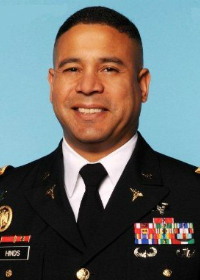
Colonel Hinds is a Brain Health Research Program Coordinator at the Department of Defense, where he coordinates neurological and psychological protection, prevention, evaluation, diagnosis, treatment and rehabilitation research as it pertains to blast injury. He previously served as the National Director of the Defense and Veterans Brain Injury Center (DVBIC), which serves active duty military and veterans with traumatic brain injury through state-of-the-art medical care and care coordination, and innovative clinical research and educational programs.

Dr. Hovda is the Director of the UCLA Brain Injury Research Center. He is Past President of the National Neurotrauma and International Neurotrauma Societies. He has served as chair of study sections for the National Institute for Neurological Disease and Stroke (NINDS). He has received a number of awards for his research on brain injury and recovery of function, including the 1991 National Head Injury Foundation Award, the Giannini Foundation Award, the Benjamin Franklin Haught Memorial Award, the 2008 Deborah L. Warden Lectureship Award and was named the Lind Lawrence Eminent Scholar for his work on the topic of Traumatic Brain Injury.
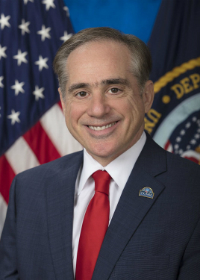
The Honorable Dr. David J. Shulkin is Secretary of the United States Department of Veterans Affairs. Prior to his confirmation as Secretary, Dr. Shulkin served as the VA’s Under Secretary for Health, leading the nation's largest integrated healthcare system with over 1,700 sites of care, serving 8.76 million veterans each year.

Dr. Smith serves as Director of the Center for Brain Injury and Repair and is the Robert A. Groff Endowed Professor and Vice Chairman for Research and Education in Neurosurgery at the Perelman School of Medicine, University of Pennsylvania. Dr. Smith is also the Scientific Director for the Big Ten/Ivy League consortium on concussion. For research awards, he is director of several multi-center National Institutes of Health (NIH) and Department of Defense grants on concussion and TBI-induced neurodegeneration, as well as for an NIH training grant on brain injury. Recent scientific awards for these contributions include the Dorothy Russell Medal, the highest honor conveyed by the British Neuropathological Society.

Dr. Timmons serves as Director of Neurotrauma, Vice Chair for the Administration Department of Neurosurgery, and Professor of Neurosurgery at Penn State Health Milton S. Hershey Medical Center. She has been a clinical researcher for a number of years, and has participated as principal investigator in numerous clinical trials related to traumatic brain injury. She has published and lectured on a variety of topics related to traumatic brain injury, neurocritical care, spinal cord injury, blunt vascular injury and healthcare delivery throughout her career.
The NFL has assembled a Scientific Advisory Board of leading independent experts, doctors, scientists and clinicians to develop and lead a clear process to identify and support compelling proposals for scientific research.
In September 2017, the NFL opened a funding opportunity for innovative translational research on concussion and comorbid conditions, including chronic traumatic encephalopathy (CTE), as well as the natural history of concussion and associated comorbid conditions. This funding opportunity is the result of the Scientific Advisory Board’s work to develop a process for soliciting, reviewing and evaluating research proposals and directing funding.

General Chiarelli, U.S. Army General (Retired), is Chief Executive Officer of One Mind, a brain illness related non-profit organization that works with members in the governmental, corporate, scientific and philanthropic communities to greatly accelerate large-scale research through “Open Science” data sharing and collaboration.

Colonel Hinds is a Brain Health Research Program Coordinator at the Department of Defense, where he coordinates neurological and psychological protection, prevention, evaluation, diagnosis, treatment and rehabilitation research as it pertains to blast injury. He previously served as the National Director of the Defense and Veterans Brain Injury Center (DVBIC), which serves active duty military and veterans with traumatic brain injury through state-of-the-art medical care and care coordination, and innovative clinical research and educational programs.

Dr. Hovda is the Director of the UCLA Brain Injury Research Center. He is Past President of the National Neurotrauma and International Neurotrauma Societies. He has served as chair of study sections for the National Institute for Neurological Disease and Stroke (NINDS). He has received a number of awards for his research on brain injury and recovery of function, including the 1991 National Head Injury Foundation Award, the Giannini Foundation Award, the Benjamin Franklin Haught Memorial Award, the 2008 Deborah L. Warden Lectureship Award and was named the Lind Lawrence Eminent Scholar for his work on the topic of Traumatic Brain Injury.

The Honorable Dr. David J. Shulkin is Secretary of the United States Department of Veterans Affairs. Prior to his confirmation as Secretary, Dr. Shulkin served as the VA’s Under Secretary for Health, leading the nation's largest integrated healthcare system with over 1,700 sites of care, serving 8.76 million veterans each year.

Dr. Smith serves as Director of the Center for Brain Injury and Repair and is the Robert A. Groff Endowed Professor and Vice Chairman for Research and Education in Neurosurgery at the Perelman School of Medicine, University of Pennsylvania. Dr. Smith is also the Scientific Director for the Big Ten/Ivy League consortium on concussion. For research awards, he is director of several multi-center National Institutes of Health (NIH) and Department of Defense grants on concussion and TBI-induced neurodegeneration, as well as for an NIH training grant on brain injury. Recent scientific awards for these contributions include the Dorothy Russell Medal, the highest honor conveyed by the British Neuropathological Society.

Dr. Timmons serves as Director of Neurotrauma, Vice Chair for the Administration Department of Neurosurgery, and Professor of Neurosurgery at Penn State Health Milton S. Hershey Medical Center. She has been a clinical researcher for a number of years, and has participated as principal investigator in numerous clinical trials related to traumatic brain injury. She has published and lectured on a variety of topics related to traumatic brain injury, neurocritical care, spinal cord injury, blunt vascular injury and healthcare delivery throughout her career.
The Scientific Advisory Board is accepting proposals from leading research teams in concussion and comorbid conditions to receive up to $20 million in grant funding over the next three to five years to support their work. The funding opportunity is intended to facilitate the translation of original, ongoing and existing research into clear clinical end points, such as progressing diagnostics, drugs, devices and treatments that advantage the patient, as well as advance understanding of the potential short- and long-term effects of concussion and associated comorbid conditions.
The intent of the initiative is to demonstrate the potential for translational breakthroughs by leveraging emerging science, current data sets and archival material on concussion and comorbid conditions.
Funding awards will be announced in early 2018.

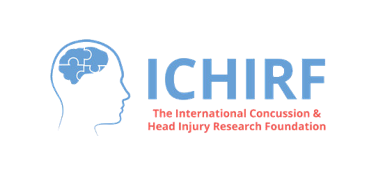
The NFL continues its work with the NFL Players Association, NFL Physicians Society and Professional Football Athletic Trainers Society, as well as the numerous experts on the NFL’s medical committees, to identify and implement changes on and off the field to help protect the health and safety of every player.

“I used to be a part of a great game day medical team for the Tennessee Titans as an Unaffiliated Neurotrauma Consultant. Now I’m working with great medical teams in place for all 32 clubs. Players are our patients and the medical professionals in the NFL are committed to giving them the best care possible.”


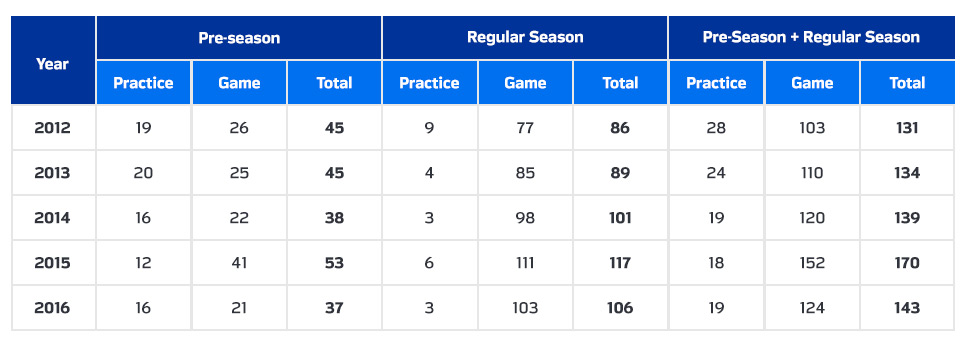
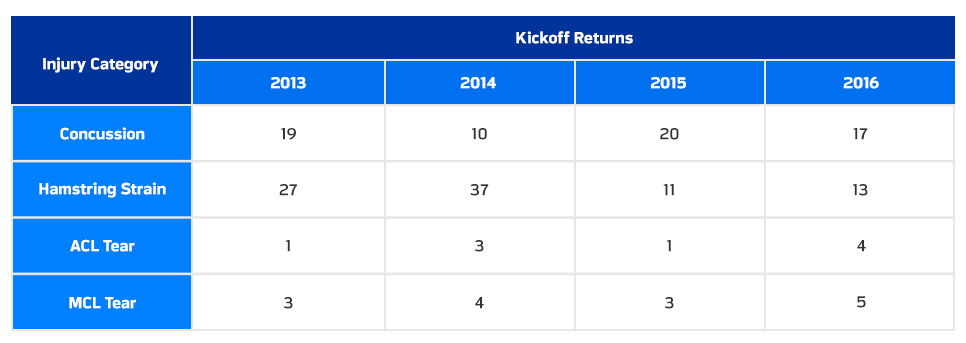

Specialists in a wide variety of disciplines relevant to player health and safety volunteer their time to explore groundbreaking research and make recommendations for how the League can continually improve the prevention, diagnosis and treatment of injuries as well as invest in scientific research to promote player health and safety.
The NFL medical committees meet throughout the year to review player health and injury data and determine what policies, programs and protocols should be adopted by the League and encourage areas of scientific research.
Each year during the NFL Scouting Combine in Indianapolis, the NFL medical committees meet to review the previous season and begin their work to prepare for the next year. These experts analyze injury data, discuss statistical trends and identify issues that need further examination or research. Representatives from the NFL Players Association participate on each medical committee and collaborate on these initiatives.
Based on their analysis, these committees offer recommendations to try to advance player safety by continually seeking to improve the prevention, diagnosis and treatment of injuries.
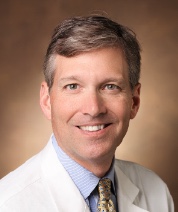
In March 2017, Dr. Allen Sills was named the NFL’s Chief Medical Officer (CMO), a new full-time position based in New York. Dr. Sills joins the NFL from Vanderbilt University Medical Center where he serves as Professor of Neurological Surgery, Orthopaedic Surgery and Rehabilitation, and Founder and Co-Director of the Vanderbilt Sports Concussion Center.
Dr. Elliott Hershman - Chair
Dr. Andrew Tucker - General Medical Committee
Dr. Robert Anderson - Musculoskeletal Committee
Dr. Ed Wojtys - Musculoskeletal Committee
Dr. Allen Sills - NFL CMO; Head, Neck and Spine Committee
Dr. John York - Owners’ Health and Safety Advisory Committee
Dr. Rob Heyer - NFL Physicians Society President
James Collins - Professional Football Athletic Trainers Society President
Dr. Thom Mayer - NFL Players Association
Dr. Andrew Tucker - Chair
Dr. Deverick Anderson - Infectious Disease
Dr. Doug Casa - Environmental Medicine
Dr. Rob Heyer - NFL Physicians Society President
Dwight Hollier - Mental Health
Dr. Patrick Strollo - Sleep Medicine
Dr. Robert Vogel - Cardiovascular
Jim Whalen - Athletic Trainer
Dr. Thom Mayer - NFL Players Association
Dr. Allen Sills - NFL CMO, Interim Chair
Dr. Julian Bailes
Ronnie Barnes
Dr. Mitch Berger
Dr. Javier Cardenas
James Collins - Professional Football Athletic Trainers Society President
Dr. Rob Heyer - NFL Physicians Society President
Dr. Wellington Hsu
Dr. Russell Lonser
Dr. Elizabeth Pieroth
Dr. Margot Putukian
Dr. Nicholas Theodore
Dr. Thom Mayer - NFL Players Association
Dr. Robert Cantu - Consultant
Dr. Joseph Maroon - Consultant
Dr. Robert Anderson - Co-Chair
Dr. Ed Wojtys - Co-Chair
Dr. Asheesh Bedi - Hip
Dr. Robert Brophy - Knee
James Collins - Professional Football Athletic Trainers Society President
Dr. Mike Coughlin - Foot and Ankle
Dr. Rob Heyer - NFL Physicians Society President
Dr. Thomas Hunt - Hand and Wrist
Dr. William Levine - Shoulder
Joe Skiba - Equipment Manager
Dr. Kurt Spindler - Research Methodology
Dr. Thom Mayer - NFL Players Association
Dr. Jeff Crandall - Chair
Dr. Cynthia Bir
Dr. Randal Ching
Dr. Rich Kent
Dr. Frank Pintar
Dr. David Meaney
Dr. Raul Radovitzky
Dr. Darren Stefanyshyn
Dr. James Funk - Scientific Coordinator
Dr. Kristy Arbogast
Dr. Barry Myers
Dr. Matthew Matava - Chair
Dr. Mitch Berger - Vice Chair
Dr. Dallas Hack
Dr. Richard Hinton
Dr. Timothy McAdams
Dr. Elizabeth Nabel
Dr. Kurt Spindler
Dr. Jeff Crandall - Engineering Consultant
Dr. Richard Kent - Engineering Consultant
Dr. Nancy Dreyer - Epidemiologist, QuintilesIMS
Dr. Christina Mack - Epidemiologist, QuintilesIMS
Dr. Lawrence Brown - Drug Policy Advisor
Dr. John Lombardo - Drug Policy Advisor
At the 2017 Annual League Meeting in March, NFL clubs voted to make additional rules changes intended to protect the health and safety of players. These recommendations were proposed by NFL clubs and players and analyzed in detail by the NFL Competition Committee, a group that met intensively after the Super Bowl to analyze film, review injury statistics and discuss player safety with physicians, safety experts and advocates, including the NFL medical committees and the NFL Players Association.
The League has made 47 health and safety-related rules changes since 2002. Rules changes for the 2017 season include:
Prohibiting the “leaper” block attempt on field goal and extra point plays.
Extending the rule moving the touchback to the 25-yard line for another year.
Giving a receiver running a pass route defenseless player protection.
Prohibiting crackback blocks by a backfield player who is in motion, even if he is not more than two yards outside the tackle when the ball is snapped.
Other Changes Seeking to Better Protect Players:
Sideline medical professionals—including members of club medical staffs responsible for the diagnosis and treatment of concussion and the UNCs and booth ATC spotters—along with NFL Players Association representatives and League officials met together in New York prior to the season for training sessions.
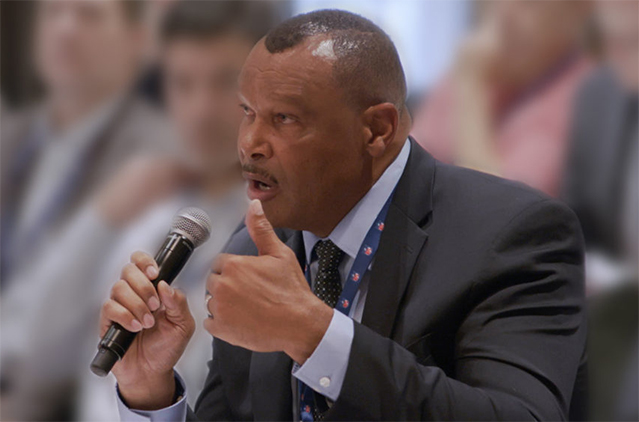
The program included remarks from Commissioner Goodell, team physicians, ATCs, game officials, the NFL Players Association and League executives, and covered a variety of topics including changes to the concussion protocol, the new medical sideline tent, and communications systems and reporting tools.
Dr. Allen Sills, the NFL’s Chief Medical Officer, led the sessions to review the latest protocols and train for the upcoming season.
There is a specialized squad of medical professionals, including team physicians and athletic trainers, and unaffiliated medical personnel, that watches the field for potential injuries and is available to provide immediate care to players at every NFL game. In conjunction with the NFL Players Association, the League has updated the sideline medical technology, which now includes tablets with specially designed applications for injury diagnosis. Every club’s medical staff has instant access to their players’ complete medical records via the Electronic Medical Record (EMR) system.
The NFL continues to transform its sidelines to help better protect players. New this season, NFL sidelines now feature medical examination tents. The mobile tents can help doctors and trainers immediately evaluate players in private following an injury.
Each unit takes just a few minutes to assemble and requires no special tools. NFL teams are required to position tents either inside a team’s bench area or adjacent to the bench area.
These SidelineER tents have been added in collaboration with the NFL Players Association and approved by both the NFL Physicians Society and the Professional Football Athletic Trainers Society.
The University of Alabama first used medical examination tents in 2015. Today, SidelineER tents are used by more than 70 college, high school, and professional football teams. They have also been used for other sports, including gymnastics, basketball, golf, lacrosse, rugby, soccer and track.
The NFL and NFL Players Association, through their respective biomechanical experts, coordinated laboratory testing on helmets available to be worn by NFL players in advance of the 2017 season. The results are displayed on the NFL/NFLPA 2017 Helmet Laboratory Testing Performance Results Poster and are shared with players, club equipment managers, medical and coaching staffs. This is just one component of an NFL player’s comprehensive assessment when selecting a helmet; other factors include discussions with the team equipment manager and medical staff, as well as helmet fit, player position and the player’s medical history.
The goal of the testing is to determine which helmets best reduced head impact severity under conditions simulating certain potential concussion-causing impacts sustained by NFL players during games, so the conclusions on helmet performance cannot be extrapolated to collegiate, high school or youth football.
This year’s testing involved 33 helmet models available as of March 2017. A survey of helmets used by NFL teams was also conducted to ensure that the helmet models most commonly used by players were included in the testing, including models that have been discontinued but can be reconditioned and worn up to 10 years after the manufacture date. Seven of the 14 helmets in the top-performing group are new this year, including the VICIS Zero1, which was one of three winners in Head Health Challenge II—part of the Head Health Initiative, a four-year, $60 million collaboration between the NFL, GE and Under Armour. Since these helmets have not previously been worn by NFL players, there is no field experience with these designs.
“A lot of people don’t realize that the shoe is an important piece of protective equipment. It’s not just about style or performance. A shoe actually takes loads off of the foot so it can protect it.”
The NFL’s Musculoskeletal Committee is driving expert reviews of cleats for NFL players. Dr. Richard Kent, a professor of Mechanical and Aerospace Engineering, Biomedical Engineering and Emergency Medicine at The University of Virginia and Principal Scientist and Consultant for Biocore LLC, leads an annual evaluation of cleats to evaluate the flexion of the cleat, to try to protect from injuries like turf toe, as well as cleat-to-turf evaluations to see how much traction there is under linear and rotational motion.
There are also efforts underway to help NFL players choose not just the best-performing shoe, but also the shoe that’s the right size and the right shape. New laser scanners will soon be found in all NFL locker rooms to scan feet. This kind of fitting procedure can optimize performance in terms of safety.
The League is committed to supporting its players—whether rookies, veterans or retired greats—through a lifetime of health and opportunity beyond football.
Healthcare, education and career benefits are offered to players and their loved ones by both the NFL and the NFL Players Association. Eligible former players receive support throughout their lives from a range of resources tailored to promote their long-term well-being. These include:
Neurological Care Benefit: The NFL has contracted with top medical centers around the country that have special expertise to provide access, evaluation and possible treatment for all eligible retired players.
Long-Term Care Insurance: Players 50 or older are eligible to receive long-term care coverage at no cost to them if they meet the underwriting requirements of the insurance provider and are approved. This coverage provides financial support for eligible players if they require long-term medical assistance at home, in the community, in assisted living or in nursing homes.
Joint Replacement Benefit: The NFL provides as much as $5,250 per player to cover healthcare items or services directly related to knee, hip or shoulder replacement surgery. In addition, the NFL Player Care Foundation provides grants to assist eligible players in need, up to and including the cost of the replacement surgery.
NFL Life Line: This 24/7 service is a free, independent and confidential phone consultation hotline available to former players, their wives and other family members who may need assistance with matters such as spousal and child safety, mental and physical health, lifestyle and transition in post-NFL life.
Information on additional resources can be found here:
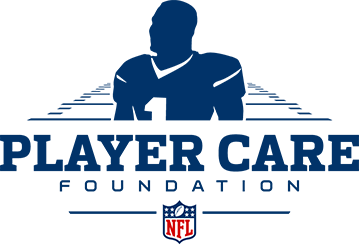
Established in 2007, the NFL Player Care Foundation (PCF) is an independent organization dedicated to helping retired players improve their quality of life. PCF addresses all aspects of life by providing programs and assistance with medical, emotional, financial, social and community issues: http://www.nflplayercare.com